Hue is located in a narrow strip of land in the North Central Coast Vietnam, and is the provincial city of Thua Thien - Hue. The city is cultural, political, educational, tourism center of the Central. With the Huong (Perfume) River and valuale heritages of feudal dynasty, Hue is worth one of the most mentioned cities in poety and music of Vietnam. The city currently owns two UNESCO titles in Vietnam.
Geographical location: Hue city is situated in the geographical coordinates of 160 to 16080’ north latitude and 10708’ to 108020’ east longitude. The city is adjacent Huong Tra town to the north and the west, with Huong Thuy town to the south, and with Phu Vang district to the east. In particular, the city lies along two riverbanks of romantic Huong River downstream, far about 112km from Da Nang, 14km from Thuan An beach, 14km from Phu Bai airport, and 50km from Chan May deep-water port.
Terrain: Leaning against Truong Son Mountains, Hue city is a plain in downstream of Huong River and Bo River with the average altitude of about 3-4m above the sea level. The plain is relatively flat, despite the appearance of alternating hills, low mountains, such as Mount Ngu Binh, and Vong Canh Mountain...
Climate: Thua Thien - Hue province belongs to humid tropical climate region, but there is a complex differentiation here both in time and in space. As the result, the climate in Hue city is quite different from the North and the South, eventually right in Thua Thien - Hue province. Coastal and delta regions divides two distinct seasons: the dry season from March to August is rather hot and muggy; the temperature sometimes is up to 39,9oC. Meanwhile the rainy season from August to January is likely to occur flood; the average temperature in Hue is around 19.7oC. In contrast, it is much rainy, the climate is cool, and the temperature is about 9oC to 29oC in the mountainous region.
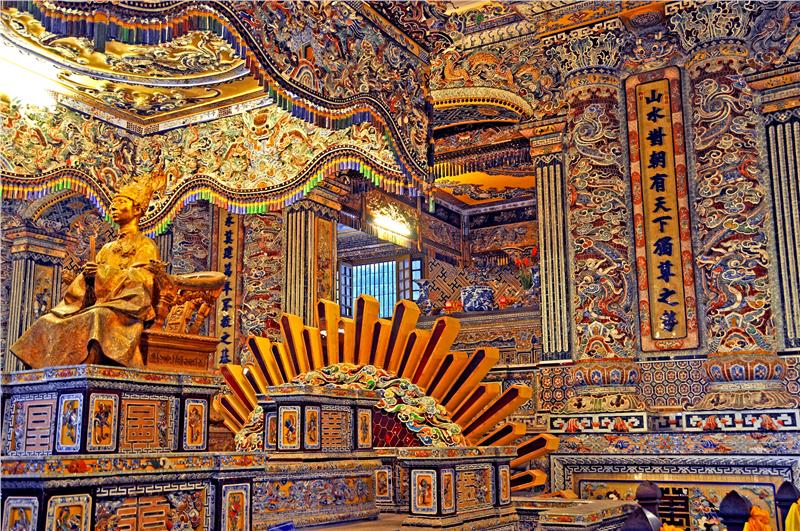
Hue is now a provincial city in Thua Thien - Hue. Undergoing many changes in history, after consolidating the state management apparatus and rearranging administrative units nationwide in September 1945, Hue officially became the provincial city. After 1975, Hue city was selected as the provincial city of Binh Tri Thien province, including: Phu An, Phu Cat, Phu Hau, Phu Hiep, Phu Hoa, Phu Thuan, Tay Loc, Thuan Hoa, Thuan Loc, Thuan Thanh, Vinh Loi, Vinh Ninh and 6 communies: Huong Luu, Thuy Phu, Thuy Phuoc, Thuy Truong, Thuy Xuan, Xuan Long. Then on 30 June, 1989, after several times merging and splitting administrative units, along with the separatation of Binh Tri Thien province, Hue city backed to the provincial city of Thua Thien - Hue. On 24 August 2005, Vietnam Government issued the decision to recognize Hue city as urban of grade 1 and directly under Thua Thien - Hue province.
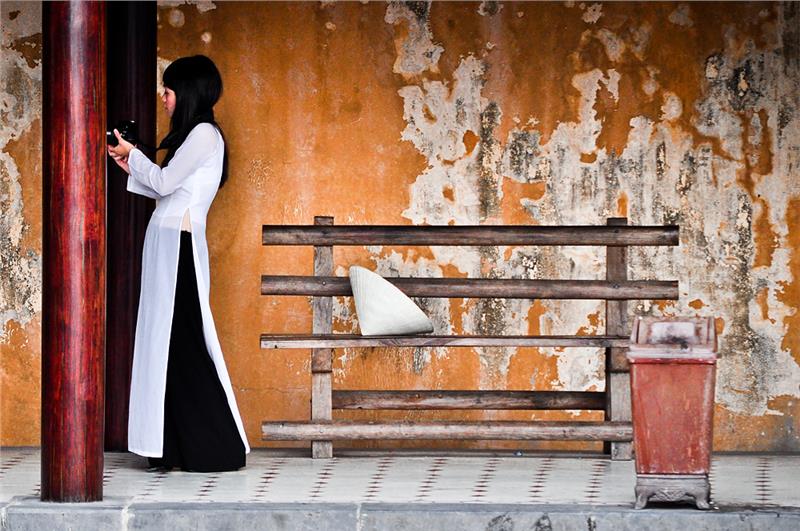
Kinh ethnic people account for 97% of provincial population, mainly reside in Hue city and coastal districts. The Vietnamese is commonly used in almost fields in the region. Besides, there are some ethnic groups in Thua Thien - Hue territory, such as Bru - Van Kieu, Co Tu, Ta Oi, Thai, Nung, Hoa...Yet the population of Van Kieu, Co Tu, and Ta Oi ethnic minorities occupies majority. Their geographical residence is mainly in hilly region.
Hue city includes 27 administrative units (27 wards): Cuu An, An Dong 3, An Hoa, An Tay, Huong So, Kim Long, Phu Binh, Phu Cat, Phu Hau, Phu Hiep, Phu Hoa, Phu Hoi, Phu Nhuan, Phu Thuan, Phuoc Vinh, Phuong Duc, Tay Loc, Thuan Hoa, Thuan Loc, Thuan Thanh, Truong An, Vinh Ninh, Vy Da, Xuan Phu, Huong Long, Thuy Bieu, and Thuy Xuan.
Hue is home to many big and famous commercial centers located in 2 sides of Huong River riverbank, such as Dong Ba Market, Tay Loc Market, An Cuu Market, Ben Ngu Market, Thuan Thanh Supermarket, Truong Tien Plaza (Coop mart Supermarket), Phong Phu Plaza(Big C).
With the aim of maintaining high economic growth and sustainability, the growth in Hue economy reached significant level. Total GDP over years increased from $ 3,934,037 million in 2006 to $ 6.14203 million in 2010. The economic growth rate in 2010 set 12.5%. Accordingly, in 2010, economic structure in Hue shifted towards services, industry - construction, agriculture - forestry - fishery, in which services accounted for 45.2%, industry - construction accounted for 39.7 % and agriculture - forestry - fishery accounted for 15.1%.
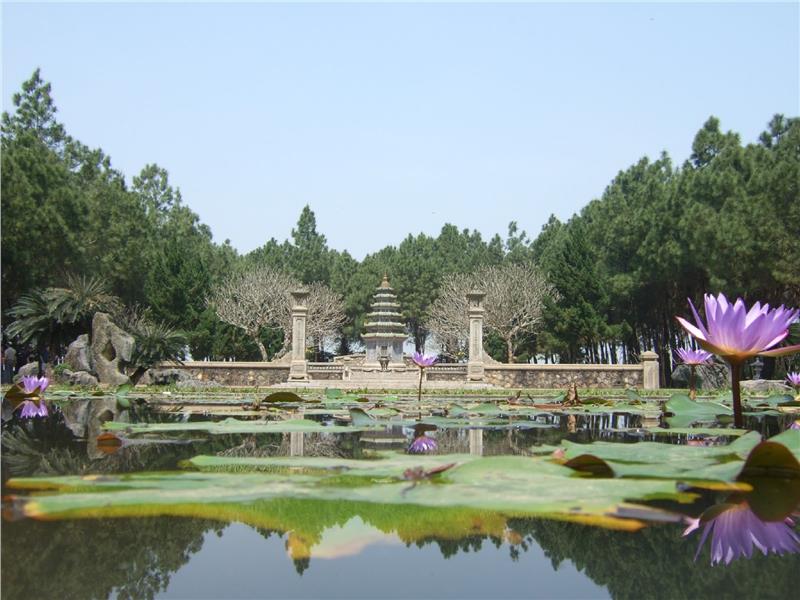
Hue owns Hue a history of formation and development of nearly seven centuries (from 1306). During that long period, Hue has integrated precious material and spiritual values to create a unique Hue cultural tradition. Hue culture is created by the unique spirit, diverse types, rich and unique content, and is expressed in various fields such as literature, music, theater, fine arts, architecture, customs and habits, festivals, behavior, communication style, and lifestyle...Notably, Tuong (a kind of traditional folk song) art in still remains its own identity. Referring to Hue, it will be a deficiency if not mentioning royal court music, a symbol of Hue city, which is recognized by UNESCO as intangible and oral masterpiece of humanity.
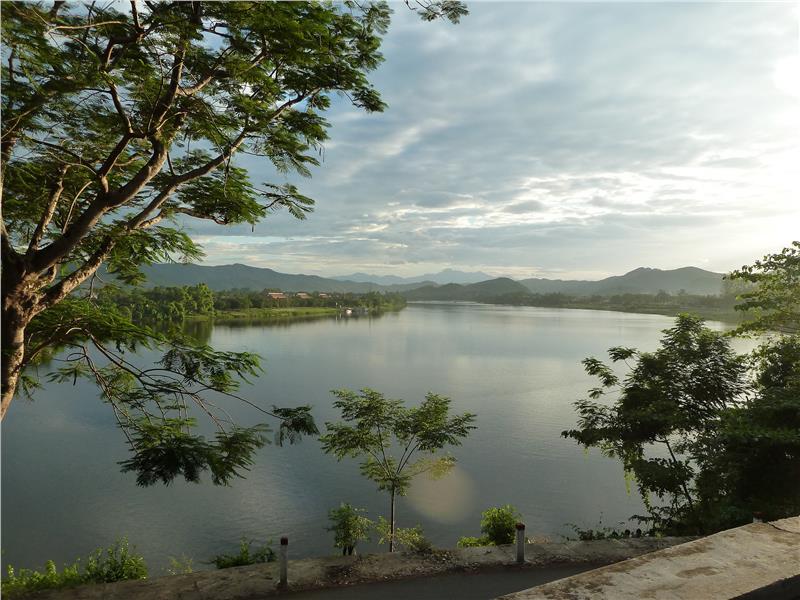
Huong River - Ngu Mountain are considered as symbols of romantic nature in Hue. Besides, highlight potential in Hue is also reflected in 300 artistic architectural works, which is recognized by UNESCO as cultural heritage of humanity in 1993. That is, the system of fortresses, palaces, royal tombs of Kings in Nguyen Dynasty, royal architectures, folk architectures, temples, shrines, home garden system... In November 2003, Hue royal court music was recognized as world intangible cultural heritage, contributing to the pride for Hue citizens.
Along with world cultural heritage, natural landscapes, and historical relics, Hue is also well known with many unique garden houses: An Hien, Lac Tinh Vien, Ngoc Son Princess, Ty Ba Trang, Tinh Gia Vien...In addition, the system of restaurants, services and hotels in Hue gradually turn the city into a tourism center in Vietnam. Hue hotels offer a capacity of 2,604 operating rooms, of which there are three 4-star hotels, two 2-star hotels and many 1-2 star hotels. Hue tourism is also available for tourism routes: Kim Long tourism area, Nam Chau Hoi Quan, Gia Hoi - Chi Lang Old Towns, Bach Dang night street, Huong River, boat trip along Huong River and Ngu Ha River...Tourism in Hue thus attracs a great number of both domestic and foreign tourists.
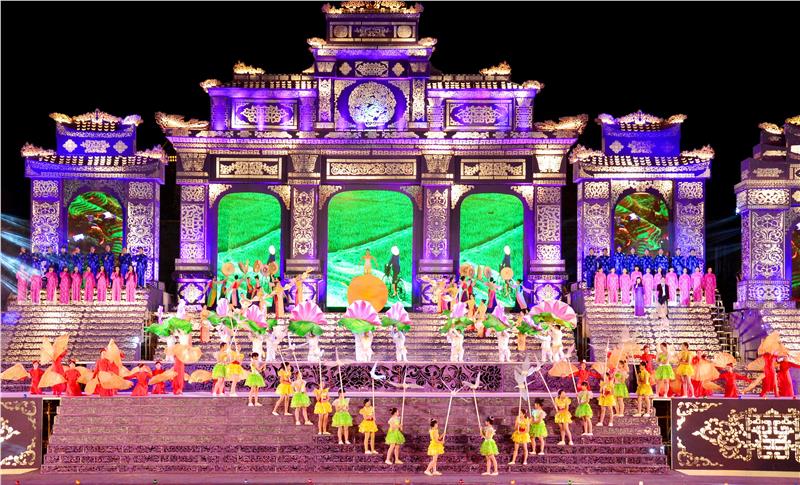
There are two kinds of festivals in Hue: traditional festivals and royal festivals. Among them, royal festivals aim to reflect royal ritual activities of Nguyen Dynasty. Meanwhile, traditional festivals are extremely diverse, such as Hue Nam festival in Hon Chen palace under Champa beliefs, festivals honoring ancestors who established traditional handicraft villages and villages. In these festivals, many cultural activities continuously take place: boat racing, tug of war, wrestling ... attracting tourists.
In particular, the city is worldwide known by its excellent Hue Festival. Organizing the first time in 2000, Hue Festival has been held so far seven times (2000, 2002, 2004, 2006, 2008, 2010, and 2012). This is a major cultural event with the scale of national and international stature, retaining important implications in the life of Hue people. In addition, this is an important condition for the construction of Hue city into festival city in Vietnam.
